RCA graduate Ying Chang takes graphic design’s grid system into three dimensions
Royal College of Art (RCA) graduate Ying Chang has created a modular system of furniture based on a two-dimensional grid system used for architectural drawing and graphic design (+ movie).
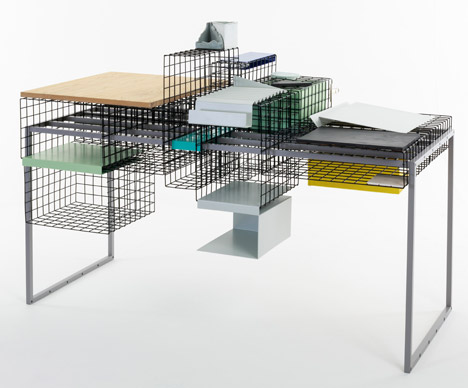
The modern grid system, pioneered by Josef Müller-Brockmann and Wim Crouwel, is a two-dimensional arrangement of intersecting lines that helps designers to lay out graphic elements such as pictures and text in a coherent fashion.
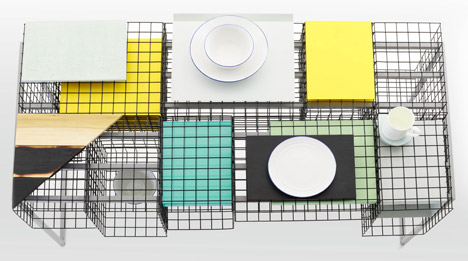
In Ying Chang's project – also called Grid System – the designer has applied these principles to three-dimensional spaces to create a modular table system that aims to challenge ideas about the furniture's functionality.
As living spaces get smaller and merge with working spaces, the use of tables, desks and shelving are evolving, yet their basic forms remain largely unchanged, said Chang.
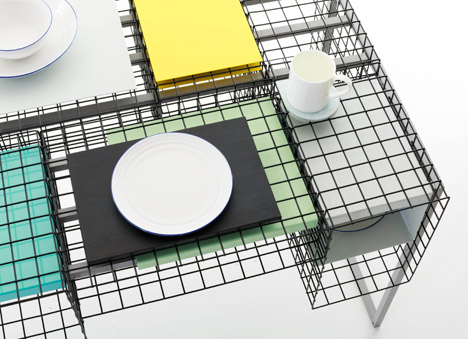
"People's immediate perception of form is often restricted by the conventional ingrained response. The table is one the most used objects in our lives; it is a place of work and action, but it also as a place to exhibit personal things and preference. And yet its flat surface form has always stayed the same," said Chang.
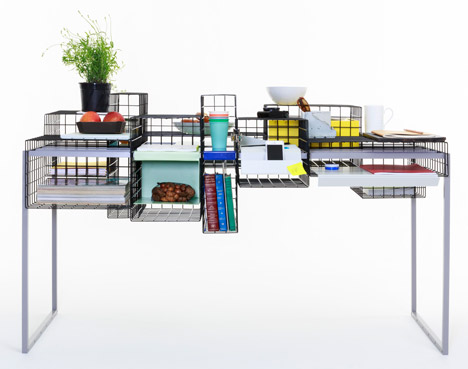
A modular system with mesh boxes in three sizes – A3 plane, A4 square section and A5 section – challenges people to create their own grid.
Steel frames hold the boxes together, while aluminium rods are used to attach the boxes to the frames. Shelves and accessories can then be added to the grid to create furniture that meets the users changing requirements.
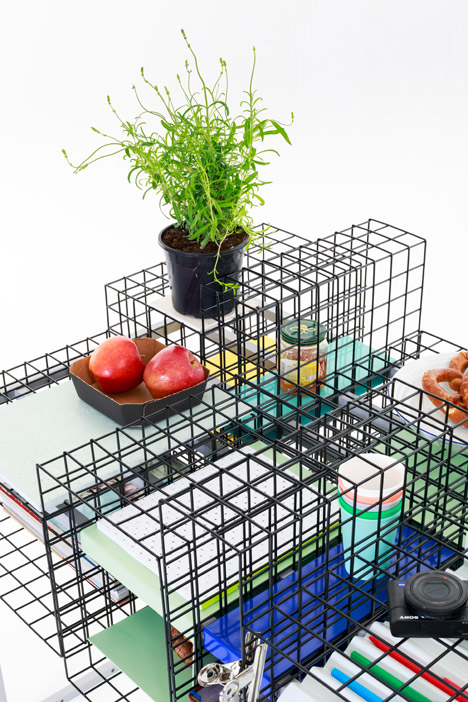
"I set about creating an 'elastic' design, offering an alternative table that will adapt to people's needs," said Chang. "The three dimensional platform offers 'temporary parking spots' with different possibilities for short term use, for example: sitting reading email, writing a note, having breakfast."
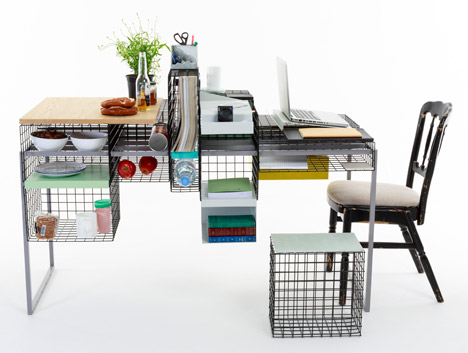
The boxes are welded together from nylon powder-coated steel mesh, while the coloured shelves are made from folded aluminium sheets and accessories are available in wood, mirror polished aluminium and concrete.
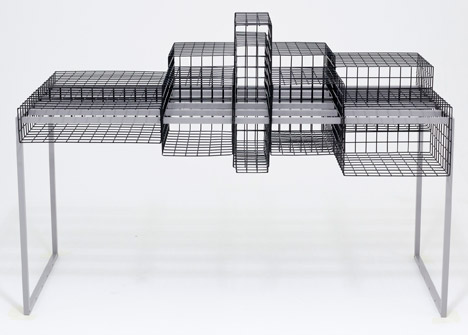
Photography is by Ian Bartlett.